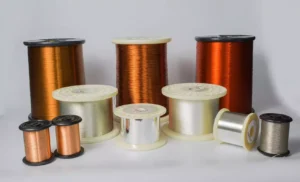Tired of a wobbly, noisy ceiling fan that barely moves the air?
You’re looking for a change, but the technical details are confusing.
Choosing the right fan shouldn’t be so hard.
The main difference is how the motors use electricity.
AC (Alternating Current) motors are more traditional, running directly on your home’s power.
DC (Direct Current) motors are newer, converting that power to create a more efficient and quieter fan, often with more speed options.
While both types of motors will spin the blades and move air, their differences in efficiency, noise, and cost can greatly impact your comfort and your wallet.
This guide will break down everything you need to know, helping you understand the technology so you can choose the perfect fan for your space with confidence.
AC vs. DC Ceiling Fans: Choosing the Right Motor for Your Home
Is your ceiling fan a noisy energy hog?
It disrupts quiet moments and inflates your electricity bill.
Understanding the motor inside is the key to choosing a better, more peaceful fan.
The core choice is between AC and DC motors.
AC motors are the common, less expensive option that connects directly to your home’s wiring.
DC motors are a newer technology that converts the power, making them much quieter and more energy-efficient.
To make the right choice, it helps to look closer at how these motors work and what that means for you.
The technology inside the fan determines everything from its sound level to its impact on your energy bills.
While one is cheaper upfront, the other can provide significant savings and comfort over time.
How an AC Motor Works
AC stands for “alternating current,” which is the standard form of electricity that powers your home.
This type of current continuously reverses its direction.
An AC ceiling fan motor is designed to use this power directly from your home’s wiring.
The fan controls its speed by managing the frequency of that electrical current.
Because this is the traditional and more established technology, AC motors are known for being reliable and are generally less expensive to purchase.
They are the most common type of motor found in standard ceiling fans.
Most fans with AC motors will offer 3 or 4 speed settings, which are typically controlled by a pull chain or a basic wall control.
While they get the job done, they are generally less efficient and noisier than their DC counterparts.
How a DC Motor Works
DC stands for “direct current,” where electricity flows in a single, constant direction.
This is the type of power used in batteries and solar power.
Since your home provides AC power, a DC ceiling fan has a built-in component called a transformer or converter.
This device changes the incoming AC power from your ceiling into DC power for the motor to use.
The DC motor then regulates its speed by controlling the amount of current itself.
This process is highly efficient and results in a motor that uses significantly less energy.
The constant flow of current creates a smoother operation with fewer vibrations, making DC motors nearly silent.
Key Deciding Factors
When you compare the two, your decision will likely come down to a few key areas:
- Cost: AC fans have a lower upfront cost, making them a good choice if you are on a tight budget.
- DC fans cost more initially, but their energy savings can offset this price over time.
- Energy Efficiency: DC motors are the clear winners here.
- They can use up to 70% less energy than AC motors to produce the same amount of airflow.
- This means lower electricity bills and a smaller environmental impact.
- Noise Level: If peace and quiet are a priority, a DC fan is the better option.
- Their smooth operation makes them significantly quieter, almost silent, which is ideal for bedrooms or offices.
- AC motors can produce an audible hum from the alternating current.
- Design & Features: Because DC motors have fewer parts and are more compact, they allow for a wider range of fan styles, including sleek and modern designs.
- DC fans also commonly offer more features, like 6-speed options and remote controls for more precise airflow management.
The Homeowner’s Guide to Ceiling Fan Motors: AC vs. DC Explained
Confused by technical terms like AC and DC when shopping for a fan?
This confusion can make you worry about making the wrong choice.
This guide will make it simple.
AC motors are the standard, affordable choice, but they can be noisy and less energy-efficient.
DC motors are a newer technology that runs much quieter and uses up to 70% less energy, though they do cost more to buy initially.
Understanding the performance differences between these two motor types is crucial for finding the right fan.
It’s not just about the price tag; it’s about long-term energy costs, the sound the fan makes in your living space, and the level of control you have over your comfort.
You can even learn to identify which type of fan you already have at home.
Performance Deep Dive: AC vs. DC
The real-world differences in performance are what matter most to homeowners.
Here is how AC and DC motors stack up in daily use.
Efficiency and Cost to Run
DC motors are the most efficient option available, using as much as 70% less energy than AC motors to achieve the same cooling effect.
This translates directly to lower electricity bills.
A practical example shows the difference clearly.
One analysis compared two similar fans, one with an AC motor and one with a DC motor.
| Motor Type | Model | Watts Used | Airflow (CFM) | Yearly Cost (example) |
| AC | Flynn | 50.76 watts | 5722.34 | $5.56 |
| DC | Caleb | 31.83 watts | 6034.25 | $3.49 |
As the table shows, the DC fan (Caleb) moved more air while using less electricity, resulting in lower yearly running costs.
While the savings per year may seem small, they add up over the typical 10-year lifespan of a ceiling fan.
This long-term saving potential can make a DC fan a smart investment.
Noise Level
The noise a fan produces is a direct result of its motor’s operation.
The constant change in direction of an alternating current creates friction and vibrations in an AC motor, which often results in an audible hum or buzz.
In contrast, DC motors use a steady, direct current, which leads to a smoother and more consistent operation with fewer vibrations.
Because of this, DC fans are significantly quieter, making them the perfect choice for bedrooms, nurseries, or any room where you want peace and quiet.
Speed and Control
Your ability to control the airflow is another major difference.
- AC Fans: These typically offer limited speed options, usually 3 or 4 settings.
- Control is often managed by a traditional pull chain or a simple wall switch.
- DC Fans: These fans provide a much broader range of speed settings, with 6-speed options being very common.
- This allows for more precise control over your comfort.
- DC fans almost always come with a remote control, which makes adjusting the speed, light, and fan direction much more convenient.
How to Tell if Your Fan is AC or DC
Not sure what kind of fan you currently have?
Here are a few simple ways to check:
- Look for Labels: The easiest method is to check for markings directly on the fan’s motor housing.
- Manufacturers often include a label that explicitly states “DC,” “Direct Current,” or lists the fan’s specifications.
- Check the Controls: The way you control the fan is a big clue.
- If your fan uses a pull chain and has only 3 speeds, it is most likely an AC fan.
- If it came with a remote control that has multiple speed settings (often 5 or 6), it is probably a DC fan.
- Listen to It: Pay attention to the sound.
- DC fans are known for their quiet operation.
- If your fan runs almost silently with no motor hum, there’s a good chance it’s a DC model.
- Consult the Manual: If you still have the fan’s manual, it will state the motor type.
- If you are still unsure after trying these steps, contacting the manufacturer is the best way to get a definitive answer.
Cool, Quiet, and Efficient: Why Your Next Ceiling Fan Should Have a DC Motor
You want a comfortable home, but not at the cost of high energy bills or the constant hum of a fan.
Old fans can be loud and inefficient.
A ceiling fan with a DC motor solves both of these problems.
DC motor ceiling fans are worth serious consideration because they are much quieter and more energy-efficient, using up to 70% less power than traditional AC fans.
They also provide more speed settings for fine-tuned comfort.
While AC motors have been the standard for years, DC technology offers a superior experience in almost every way.
The benefits go beyond just saving money on your electricity bill.
They enhance your home’s comfort through quiet operation and precise control, and they even offer advantages in durability and style.
For anyone prioritizing efficiency and a peaceful environment, a DC fan is a smart, long-term investment.
The Value Proposition: Cost vs. Benefits
The most common hesitation with DC fans is their price.
It’s true that they generally have a higher upfront cost than AC fans.
However, it is important to look at this not as a simple purchase, but as a long-term investment.
The significant energy savings can offset that higher initial price over the fan’s lifespan.
Because DC motors use up to 70% less electricity to create the same airflow, the savings on your monthly energy bill accumulate year after year.
For an energy-conscious consumer looking to save money in the long run, a DC fan is an excellent choice.
Beyond Savings: The Comfort Factor
The advantages of a DC motor extend far beyond your wallet and into your daily comfort.
- Exceptionally Quiet Operation: This is one of the biggest benefits of DC technology.
- The motors run with a smooth, steady current that dramatically reduces the friction and vibrations that cause the humming noise in AC fans.
- This makes them operate almost silently.
- This feature is perfect for light sleepers who want a fan in the bedroom or for maintaining a quiet environment in an office or living area.
- Precise Airflow Control: DC motors give you more power over your comfort.
- While AC fans are typically limited to 3 speeds, DC fans commonly offer 6 or more speed settings.
- This wider range allows you to fine-tune the airflow to your exact preference, from a gentle breeze to a powerful downdraft.
- This level of control is usually managed with a convenient remote, with some models even offering smart home integration for voice control.
Durability and Modern Design
The benefits don’t stop there.
The engineering behind DC motors also contributes to a longer-lasting and more stylish product.
- Longer Lifespan: DC motors tend to be more durable and require less maintenance than AC motors.
- This is because they are built with fewer moving parts and generate less heat during operation, which results in less wear and tear over time.
- Creative and Compact Styles: The internal components of a DC motor are smaller and more compact.
- This gives fan designers more freedom to create unique, streamlined, and modern looks that aren’t possible with bulky AC motors.
- If you are looking for a fan that is a style statement, it will likely have a DC motor.
Conclusion
Ultimately, choosing between an AC and DC fan depends on your personal priorities.
Weigh the upfront cost against long-term efficiency, noise levels, and control to find the perfect fan.







